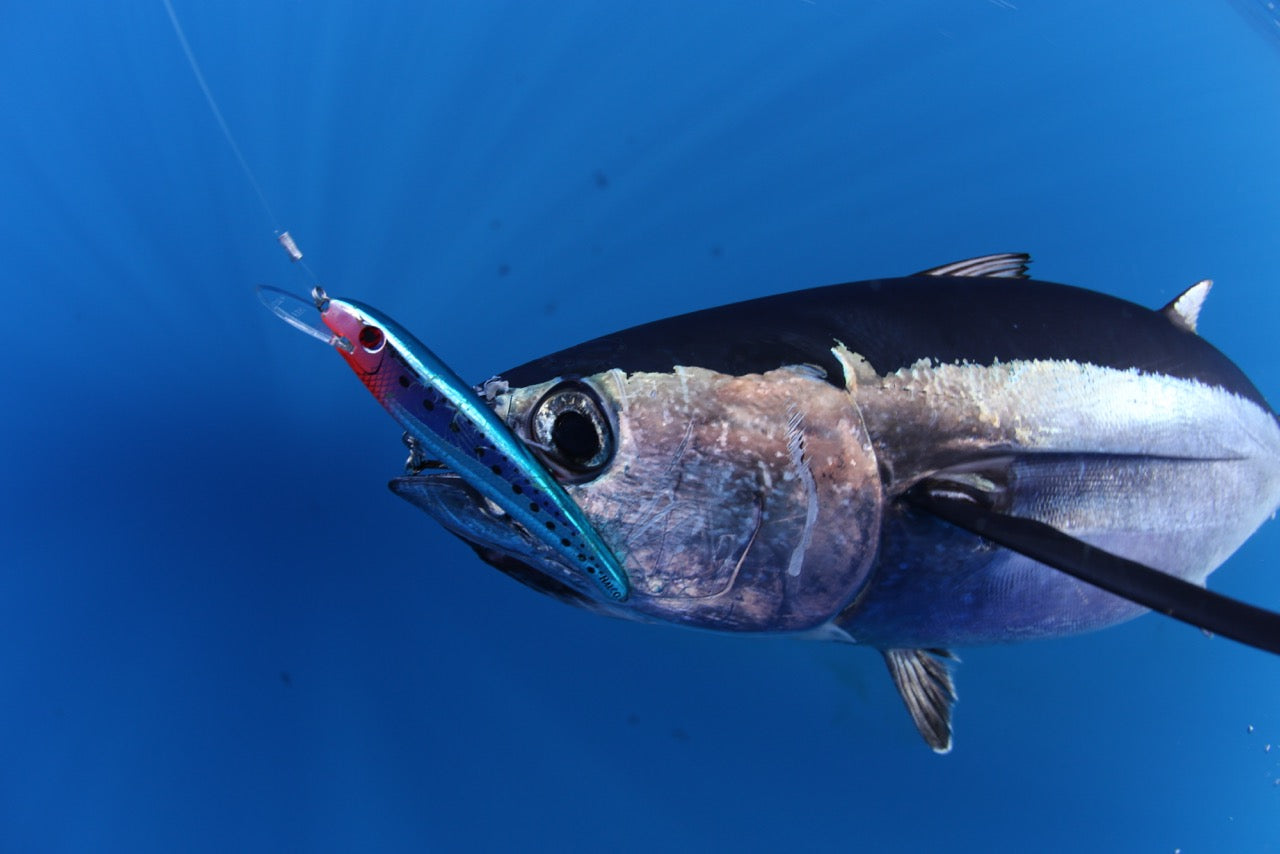SPECIES GUIDE
Tuna Fishing Guide
No other fish excites anglers quite like tuna, especially big tuna like yellowfin, bluefin, and bigeye tuna. Whether it’s the sheer power as they scream off on that first run or the thrill of watching barrel-sized tuna erupt out of the water while seabirds wheel above, tuna get the adrenaline running like no other species.
Tuna are found across nearly all tropical and subtropical waters around the world. Australia is lucky enough to have yellowfin, bigeyes, bluefin, and albacore offshore, while inshore there are skipjack, bonito, longtails, mackerel tuna, and even the infamous dogtooth on reef drop-offs.

Favouring deeper offshore waters, yellowfin are common along both the East and West Coasts of Australia. A schooling fish, they can grow to more than 100 kg, although fish over 80 kg are now considered trophies. The biggest fish traditionally come from NSW waters, especially the Far South Coast, where the record stands at 124 kg. A fast-growing species, yellowfin can reach the 100-kilo mark in less than eight years under the right conditions.
Trolling has long been one of the best techniques for catching yellowfin. Anglers used to troll skirted lures, but in recent years, hard-bodied lures have produced the lion’s share of big tuna. Our biggest yellowfin was taken on a Laser Pro 190 set long in the shotgun position, especially in King Brown or Pilchard colours. The new Laser Pro 210 has also been making waves, while the Max 220 is performing brilliantly short off the outrigger—especially in Chrome Pink. Hotspots include Bermagui, Jervis Bay, Sydney, and Exmouth.
The Southern Bluefin Tuna (SBT), on the other hand, is a much slower-growing fish that can live for more than 40 years and exceed 200 kg. Once a rarity, strong management has seen their population rebound, and they are now prolific across South Australia, Victoria, Tasmania, and NSW. Hotspots include Eagle Hawk Neck, the Shipwreck Coast, and southern NSW waters near Sydney.

Trolling remains the most effective technique for bluefin, with most anglers using a mix of hard bodies and skirted lures. Many of my jumbo 100 kg+ fish have been caught on a Laser Pro (190 or 210) in the shotgun position, particularly in the Blue Mackerel colour. When chasing big fish, I recommend swapping trebles for inline single hooks—one large single on the belly has proven especially effective.
Albacore may be overshadowed by their larger cousins, but they are fantastic sportfish in their own right. Typically found in southern NSW, Tasmania, and Western Victoria, they thrive in temperate offshore waters and can reach up to 30 kg. Albacore love hard-bodied lures—especially the Laser Pro range and the Max Series from 130 through to 220.
Bigeye tuna are more elusive, spending much of their time in deeper water. While the Australian fishery is still developing, they have huge potential—particularly for anglers trolling at dawn and dusk. A new fishery for Pacific Bluefin is also emerging.
For smaller tuna, casting to surface-feeding fish provides unmatched excitement. Throwing small metals like Twisty and Outcast lures and cranking fast delivers explosive surface strikes. The Outcast, in particular, casts a mile and is ideal for land-based anglers.

When it comes to locating tuna offshore, understanding ocean currents is key. Tuna use currents like aquatic highways to find bait concentrations. Sea Surface Temperature (SST) charts make reading these movements easier than ever, highlighting temperature breaks where plankton—and therefore baitfish—concentrate. Learning to interpret these charts helps you find the action faster.

Tuna are endothermic, meaning they can conserve body heat generated while swimming. This makes them powerful, efficient predators that thrive around temperature breaks—prime territory for lure trolling.
Modern technology is fantastic, but traditional bird spotting remains a vital skill. Seabirds are your best signposts in the sky—Gannets and Terns in particular. Watch their behaviour carefully, as circling and diving birds almost always indicate feeding tuna below.

Tuna are most active early morning and late afternoon, so plan your trips accordingly. Some of the best bites come right before sunset—don’t pack up too early! With modern electronics and reliable outboards, fishing into the twilight hours has never been easier.
Trolling remains a highly effective technique, covering large areas quickly. Alternatively, casting to surface-feeding fish is pure excitement—because that’s just tuna fishing.